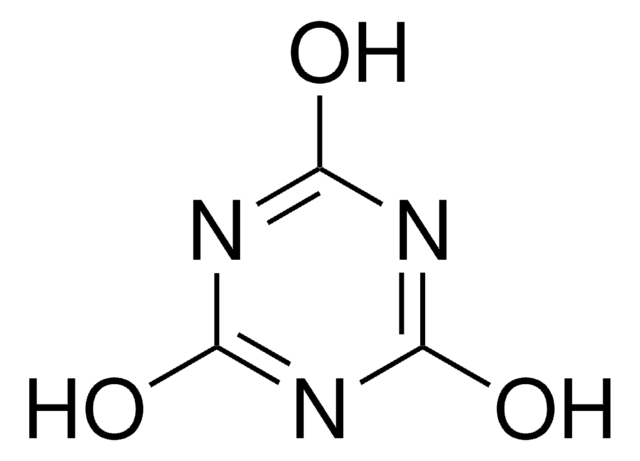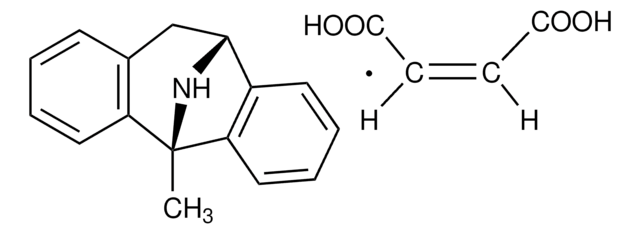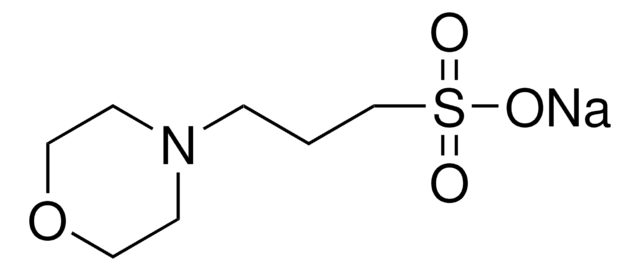83980
Rubidium chloride
purum p.a., ≥99.0% (AT)
About This Item
Produits recommandés
Qualité
purum p.a.
Pureté
≥99.0% (AT)
Forme
crystals
Pf
715 °C (lit.)
Densité
2.8 g/mL at 25 °C (lit.)
Traces d'anions
sulfate (SO42-): ≤200 mg/kg
Traces de cations
Ca: ≤50 mg/kg
Cd: ≤50 mg/kg
Co: ≤50 mg/kg
Cu: ≤50 mg/kg
Fe: ≤50 mg/kg
K: ≤5000 mg/kg
Na: ≤500 mg/kg
Ni: ≤50 mg/kg
Pb: ≤50 mg/kg
Zn: ≤50 mg/kg
Chaîne SMILES
[Cl-].[Rb+]
InChI
1S/ClH.Rb/h1H;/q;+1/p-1
Clé InChI
FGDZQCVHDSGLHJ-UHFFFAOYSA-M
Vous recherchez des produits similaires ? Visite Guide de comparaison des produits
Application
- An insulating layer in the OLED fabrication to improve the electroluminescent efficiency.
- A component of an aqueous quaternary system in the study of its physicochemical properties using an isothermal evaporation method.
Code de la classe de stockage
11 - Combustible Solids
Classe de danger pour l'eau (WGK)
WGK 2
Point d'éclair (°F)
Not applicable
Point d'éclair (°C)
Not applicable
Équipement de protection individuelle
Eyeshields, Gloves, type N95 (US)
Faites votre choix parmi les versions les plus récentes :
Déjà en possession de ce produit ?
Retrouvez la documentation relative aux produits que vous avez récemment achetés dans la Bibliothèque de documents.
Les clients ont également consulté
Notre équipe de scientifiques dispose d'une expérience dans tous les secteurs de la recherche, notamment en sciences de la vie, science des matériaux, synthèse chimique, chromatographie, analyse et dans de nombreux autres domaines..
Contacter notre Service technique











